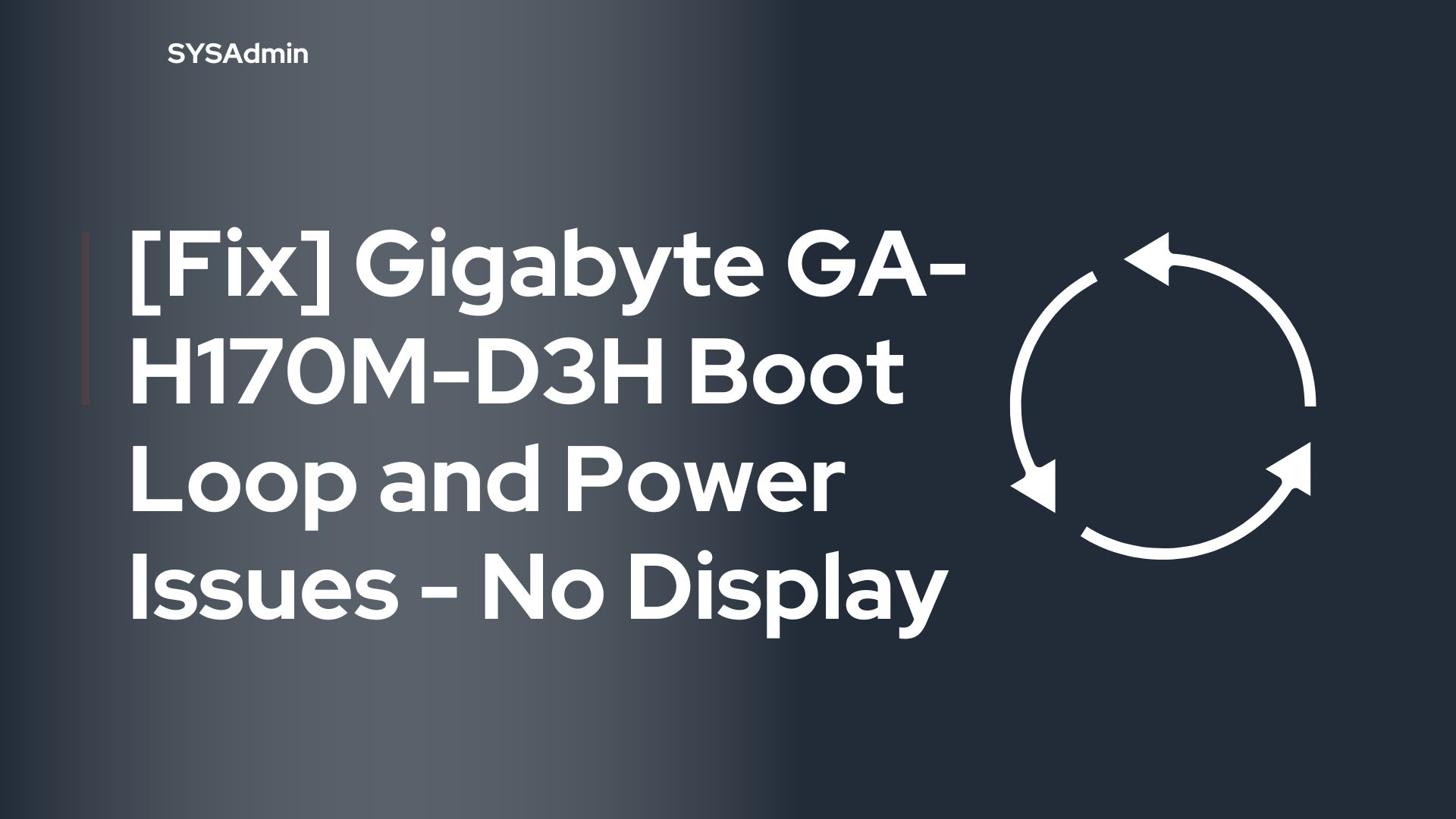A boot loop with power issues and no display on your Gigabyte GA-H170M-D3H motherboard can be frustrating, but there are steps you can take to troubleshoot and diagnose the problem. Here’s a breakdown of potential causes and solutions:
Fast Solution Methods:
Ensure all connections are secure: Double-check all power cables, including the 24-pin ATX connector, CPU power connector, and any additional peripheral cables. Make sure RAM modules are seated firmly in their slots.
Clear CMOS: Reset the BIOS settings to default by removing the CMOS battery for a few minutes and then putting it back in. Consult your motherboard manual for specific instructions.
Test with minimal hardware: Disconnect all non-essential peripherals like hard drives, optical drives, and additional USB devices. Try booting with only one stick of RAM at a time (if you have multiple) in different slots.
Possible causes:
Hardware failure: Faulty components like the motherboard itself, CPU, RAM, or power supply can cause boot loops and power issues.
BIOS issues: Outdated or corrupted BIOS firmware can lead to compatibility problems and boot failures.
Overheating: Insufficient cooling or faulty fan can cause overheating, leading to automatic shutdowns and boot loops.
Loose connections: Improperly seated components or loose cables can disrupt power delivery and communication.
Troubleshooting steps:
Basic Checks to Fixing Gigabyte GA-H170M-D3H Boot Loop:
#1: Power Down and Discharge:
- Unplug the power cord: Ensure complete power disconnection for safety and capacitor discharge.
- Remove the CMOS battery: Locate the small, round battery on your motherboard near the bottom edge. Carefully remove it.
- Wait for 10 minutes: This allows capacitors to fully drain, potentially resolving boot loop issues.
- Reinsert the CMOS battery: Put the battery back in its slot, ensuring proper placement.
#2: Enter BIOS and Disable Fast Boot:
- Reconnect the power cord and turn on your PC: Wait for the boot sequence to begin.
- Enter BIOS: The key combination varies depending on your motherboard. Consult your manual or search online for specific instructions (e.g., F2, Del, or Esc).
- Navigate to the “Boot Menu”: Look for options related to boot configuration or sequence.
- Disable Fast Boot: Locate the “Fast Boot” setting and set it to “Disabled” or “Off”. Save your changes and exit the BIOS.
#3: Optional Checks and Further Troubleshooting:
- Check other BIOS settings: If disabling Fast Boot doesn’t resolve the issue, consult your motherboard manual and consider resetting BIOS to default settings for further troubleshooting.
- Update BIOS: Download and install the latest BIOS version from Gigabyte’s website. Refer to their instructions for safe flashing procedures.
- Hardware checks: If the issue persists, consider checking for loose connections, faulty hardware like RAM or CPU, or overheating issues.
#4: Test with minimal hardware:
- Disconnect all non-essential peripherals like hard drives, optical drives, and additional USB devices. Try booting with only one stick of RAM at a time (if you have multiple) in different slots.
Advanced troubleshooting:
- Check for debug LEDs: Your motherboard might have LED indicators that provide clues about the boot process and potential errors. Consult your motherboard manual to understand the meaning of different LED patterns.
- Test with compatible components: If you have access to compatible spare parts like a different power supply, RAM, or graphics card, try swapping them to see if the problem persists.
- Update BIOS: If your motherboard supports BIOS flashing, consider updating the BIOS to the latest version. Download the correct version from the Gigabyte website and follow their instructions carefully.
Also Check Below Video solution works for many people.
Seeking help:
- Consult the Gigabyte support website: Support Services Center – GIGABYTE India, The Gigabyte website offers troubleshooting guides, FAQs, and driver downloads for your motherboard. You can also contact their customer support for further assistance.
- Seek professional help: If you’re not comfortable troubleshooting yourself, consider taking your PC to a qualified technician for diagnosis and repair.
Important notes:
Safety first: Always unplug your PC from the power outlet before performing any hardware troubleshooting.
Document your steps: Keep track of what you’ve tried and the results to help diagnose the problem and avoid repeating unnecessary steps.
Be patient: Troubleshooting can be a process of elimination. Be patient and methodical in your approach.
I hope this information helps you troubleshoot the boot loop and display issues on your Gigabyte GA-H170M-D3H motherboard. If you need further assistance or have specific questions about your situation, feel free to ask!
